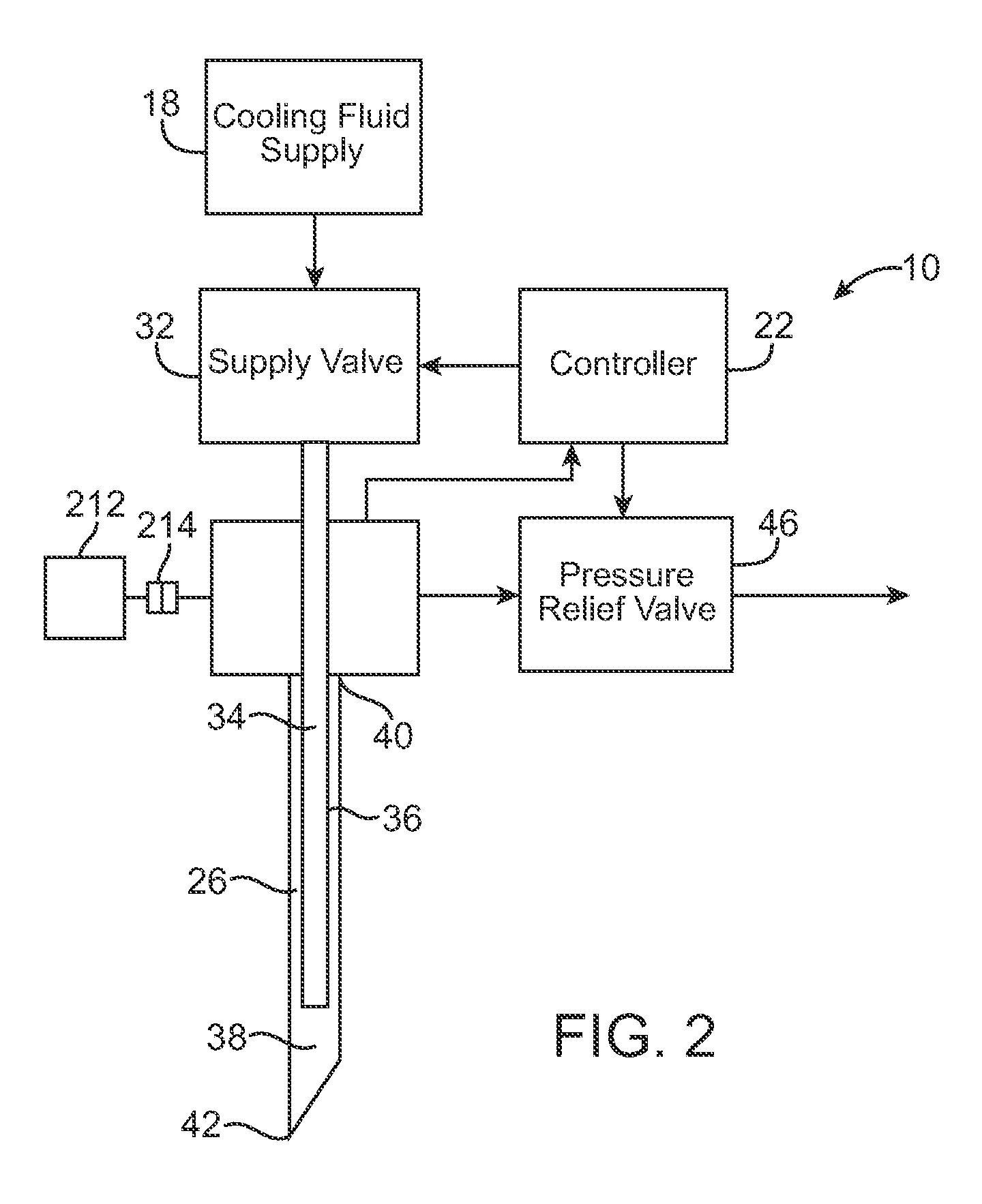Pain management using cryogenic remodeling
a cryogenic remodeling and pain technology, applied in the field of pain management, can solve the problems of limiting the duration of pain inhibiting treatment, interfering with the transmission of pain signals, and apoptosis-inducing treatments not necessarily being permanent, so as to achieve effective control, widen the treatment volume, and inhibit pain
- Summary
- Abstract
- Description
- Claims
- Application Information
AI Technical Summary
Benefits of technology
Problems solved by technology
Method used
Image
Examples
Embodiment Construction
[0027]Very generally, the present invention provides improved medical devices, systems, and methods, most often for the treatment of pain. The invention will find application in a variety of medical treatments and diagnoses, particularly for pain management of patients suffering from chronic or acute pain. Many embodiments employ cooling to remodel one or more target tissues so as to effect a desired change in a composition of the target tissue, and / or a change in its behavior. For alleviation of pain, treatments may target nerve tissue so as to interfere with the generation or transmission of sensory nerve signals associated with the pain. Other embodiments may target motor nerve tissue, muscles, neuromuscular junctions, connective tissue, or the like, so as to alleviate pain associated with contraction of a muscle.
[0028]Chronic pain that may be treated using embodiments of the invention may include (but is not limited to) lower back pain, migraine headaches, and the like. Sources ...
PUM
 Login to View More
Login to View More Abstract
Description
Claims
Application Information
 Login to View More
Login to View More - R&D
- Intellectual Property
- Life Sciences
- Materials
- Tech Scout
- Unparalleled Data Quality
- Higher Quality Content
- 60% Fewer Hallucinations
Browse by: Latest US Patents, China's latest patents, Technical Efficacy Thesaurus, Application Domain, Technology Topic, Popular Technical Reports.
© 2025 PatSnap. All rights reserved.Legal|Privacy policy|Modern Slavery Act Transparency Statement|Sitemap|About US| Contact US: help@patsnap.com



